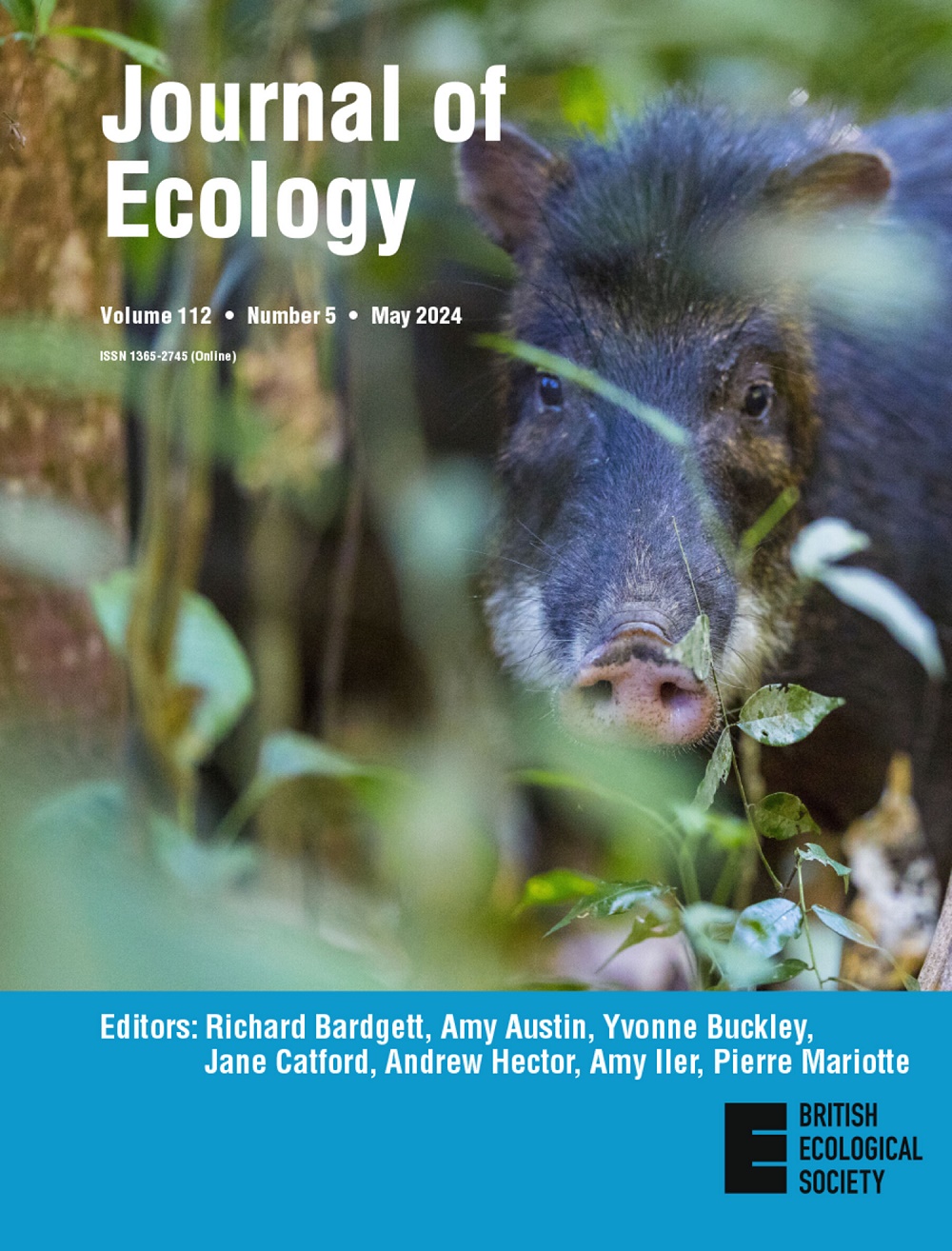竞争导致了植物适合度和发生度在环境梯度上的数量错配
IF 5.6
1区 环境科学与生态学
Q1 ECOLOGY
引用次数: 0
摘要
物种分布取决于非生物环境和生物相互作用之间复杂的相互作用。植物群落的实证工作越来越多地揭示了竞争如何介导物种对环境变化的人口统计学响应,但了解竞争的人口统计学后果何时以及如何在观察到的发生模式中表现出来仍然是一个重要的挑战。在这里,我们探讨了竞争如何导致植物适合度和发生度之间的数量错配,沿着空间环境梯度,在一个土壤异质性的加州一年生草地景观。我们通过实验量化了8种本地一年生植物的发芽率、繁殖力和终生适合度对土壤环境空间变化的响应,无论是在有或没有自然发生的邻居的情况下。我们还调查了该物种在整个研究景观中的发生情况。结合这些适应度和发生率数据,我们检验了观测到的发生率模式是否与不同土壤因子梯度下的适应度响应一致。我们发现,竞争改变了一些物种对原始土壤梯度(土壤质地和肥力)的适应度响应。在没有竞争对手的情况下,对这种环境梯度的适应度反应通常与发生概率的估计变化不太一致。至少有一个物种(加州拉斯尼亚)更有可能出现在沙质、贫瘠的土壤中,在那里它的适合度预计是最低的。相比之下,我们发现竞争对二级土壤梯度(土壤养分组成,特别是Ca:Mg)的适合度响应和发生的影响相对较小。合成。我们证明了竞争可以导致植物适应性和发生度在空间环境梯度上的不匹配。重要的是,这些数量上的不匹配取决于所讨论的物种和环境梯度。我们的研究结果提醒我们,不要假设发生的变化意味着适应度的变化,反之亦然,特别是当竞争强度与非生物环境共同变化时。本文章由计算机程序翻译,如有差异,请以英文原文为准。




Competition contributes to quantitative mismatches between plant fitness and occurrence along environmental gradients
求助全文
通过发布文献求助,成功后即可免费获取论文全文。
去求助
来源期刊

Journal of Ecology
环境科学-生态学
CiteScore
10.90
自引率
5.50%
发文量
207
审稿时长
3.0 months
期刊介绍:
Journal of Ecology publishes original research papers on all aspects of the ecology of plants (including algae), in both aquatic and terrestrial ecosystems. We do not publish papers concerned solely with cultivated plants and agricultural ecosystems. Studies of plant communities, populations or individual species are accepted, as well as studies of the interactions between plants and animals, fungi or bacteria, providing they focus on the ecology of the plants.
We aim to bring important work using any ecological approach (including molecular techniques) to a wide international audience and therefore only publish papers with strong and ecological messages that advance our understanding of ecological principles.
 求助内容:
求助内容: 应助结果提醒方式:
应助结果提醒方式:


